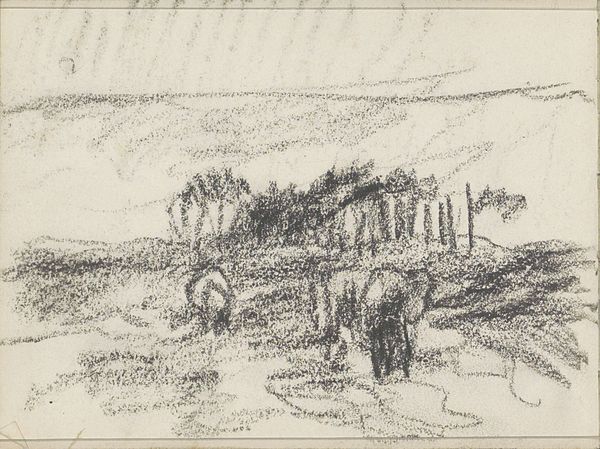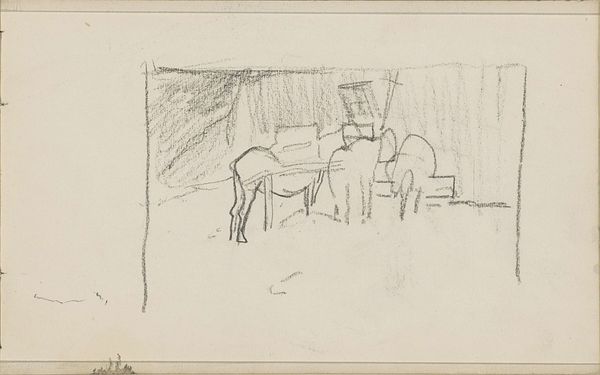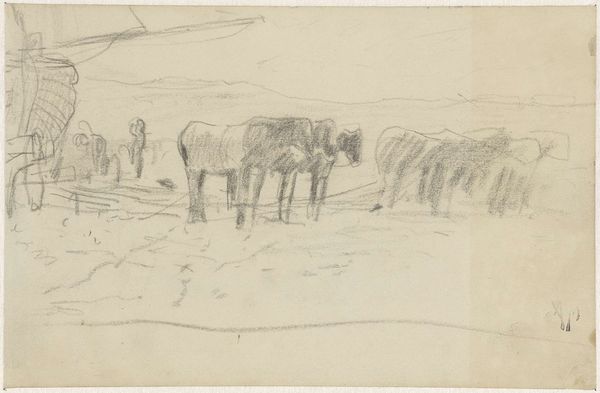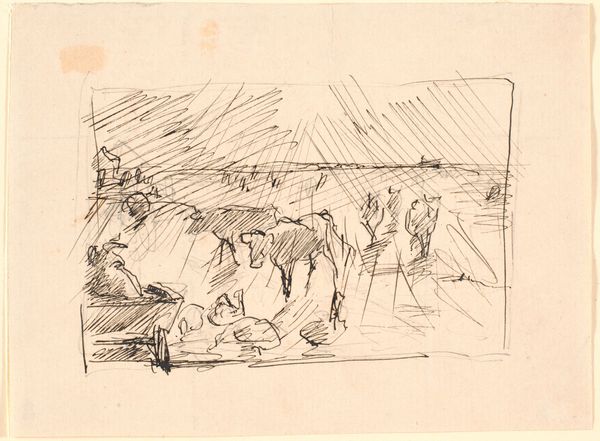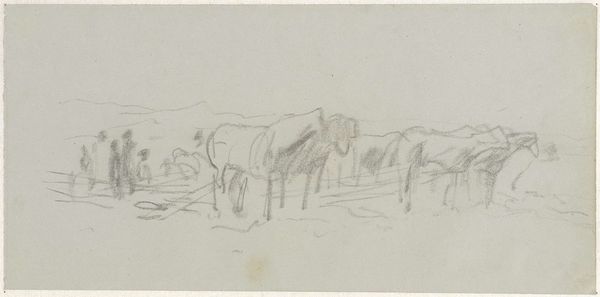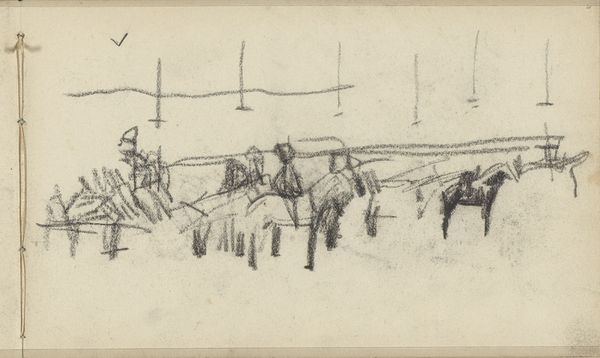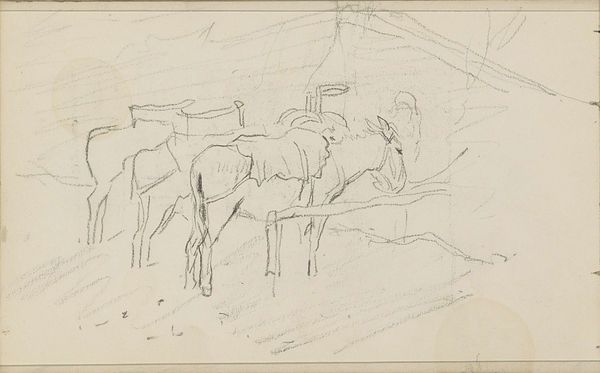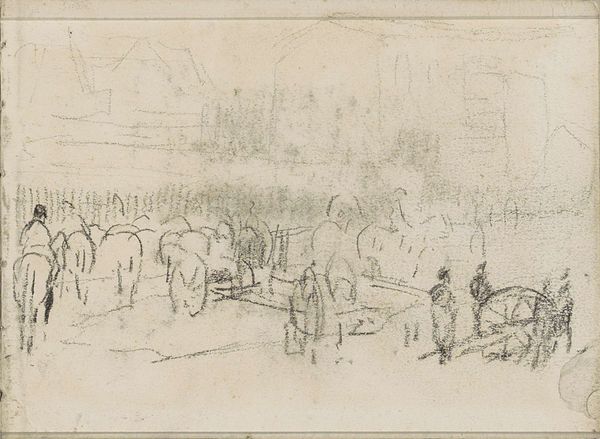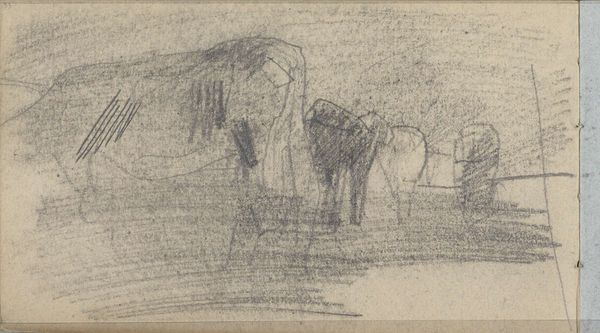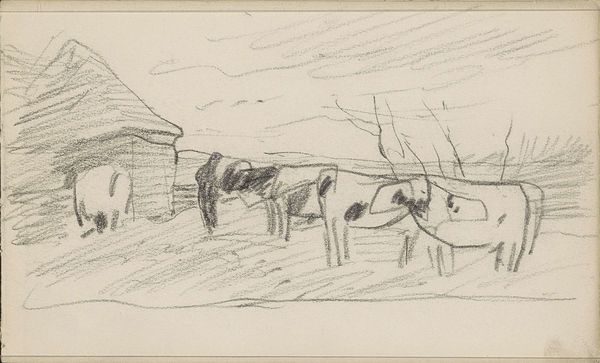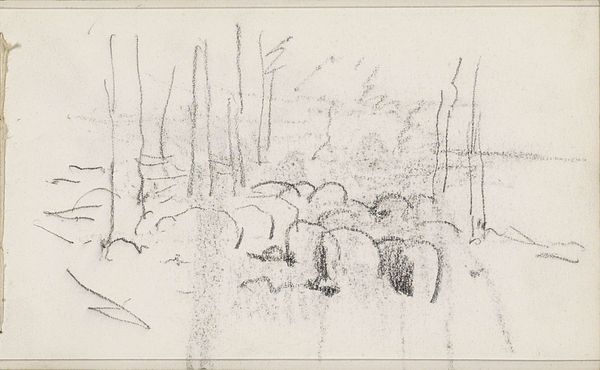
drawing, charcoal
#
drawing
#
animal
#
landscape
#
charcoal
#
realism
Copyright: Rijks Museum: Open Domain
Editor: This charcoal drawing, "Koeien in een weiland" – or "Cows in a Meadow" – by Anton Mauve, feels very sparse and unfinished to me, yet incredibly evocative. What catches your eye when you look at it? Curator: What I find compelling is the rawness of the medium. Charcoal, so basic, almost primal. It speaks volumes about artistic labour. Consider how Mauve prepared the charcoal, possibly even from locally sourced materials. Think of the direct connection between artist, tool, and subject. It's about recording rural labor, of course, but it also asks, "What is the value of this particular type of labor? And how is this scene commodified and circulated as art?" Editor: So, you're seeing the choice of materials and the process itself as a commentary? How so? Curator: Precisely! It begs the question: Is Mauve elevating the working class by immortalizing them and their livelihood, or is he merely objectifying them? And what role does this artwork play in that exchange, its materiality contributing to its inherent meaning. Where does the labor end and the commodity begin? How are cows depicted? Consider the impact of industrial farming then and now. Editor: That's fascinating. I hadn't considered the social implications embedded in the very materiality of the work. I suppose I was focused on the aesthetic simplicity. Curator: Often, those aesthetic choices are carefully chosen and deeply intertwined with those bigger questions and can give a fresh and often radical insight on the more traditional aesthetics used at the time. How can we further read this choice as being the true intent behind the scene presented here? Editor: Thanks; I’ll definitely look at art with more of a material lens now!
Comments
No comments
Be the first to comment and join the conversation on the ultimate creative platform.


